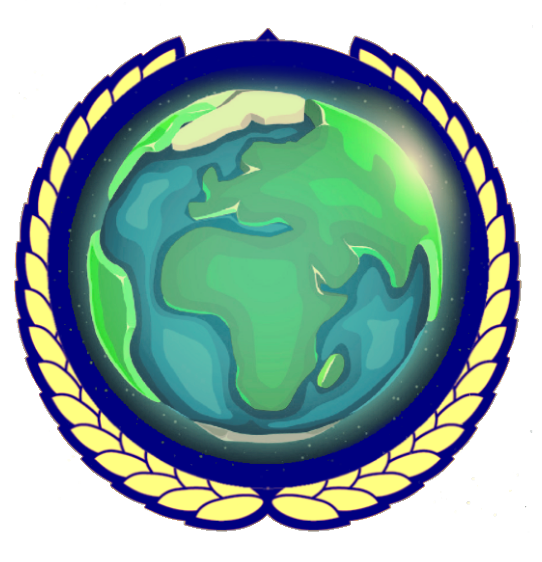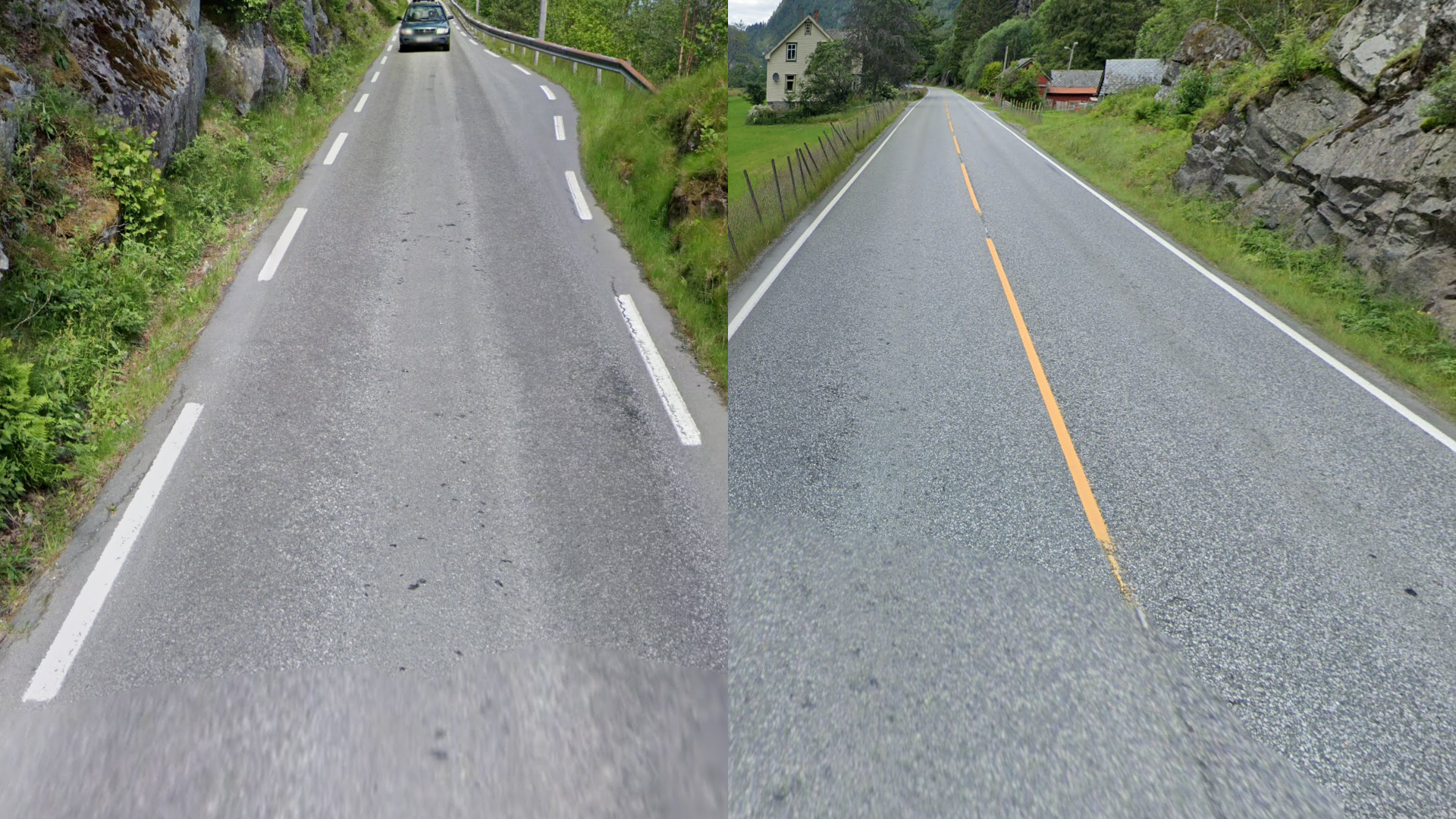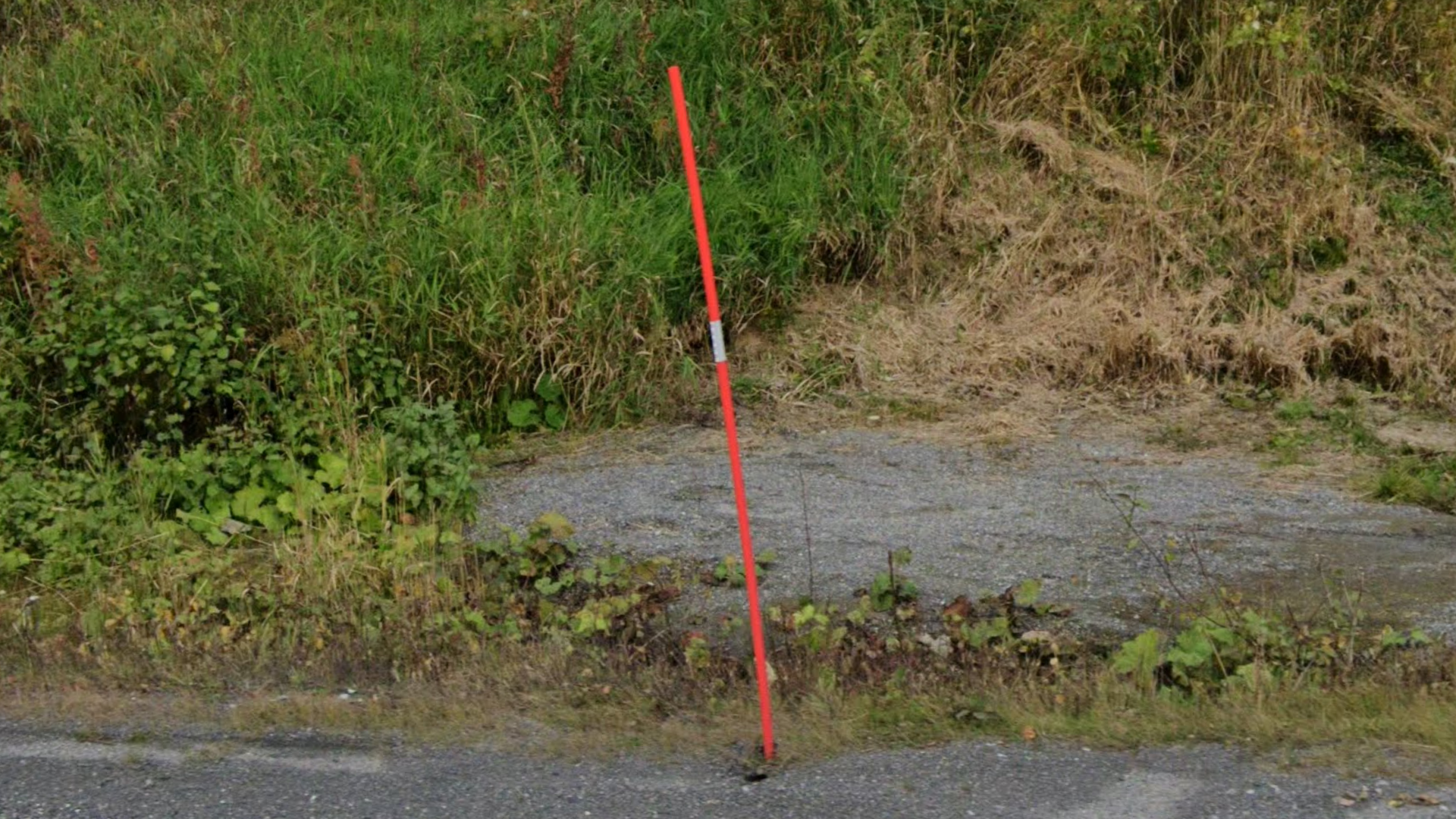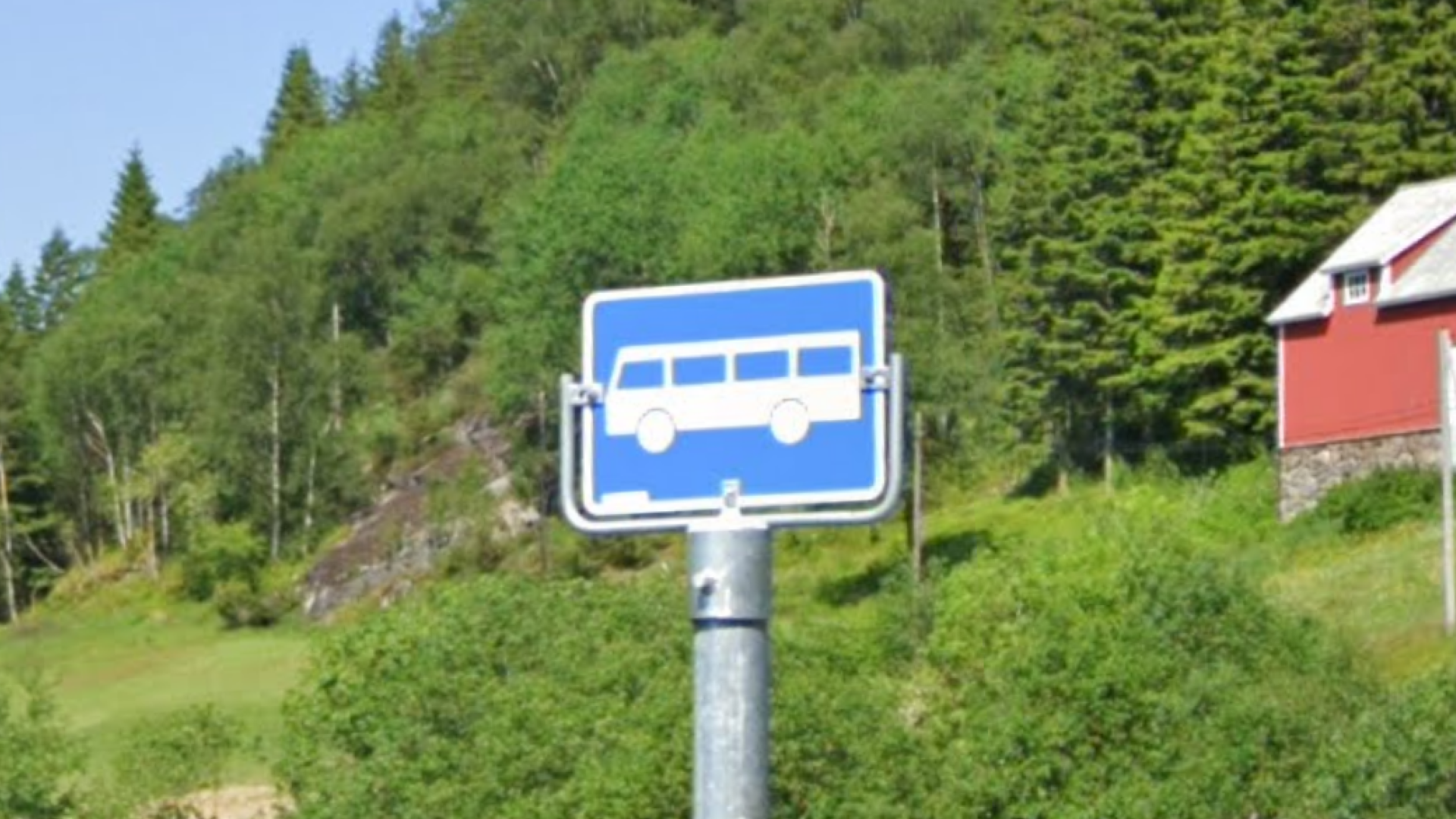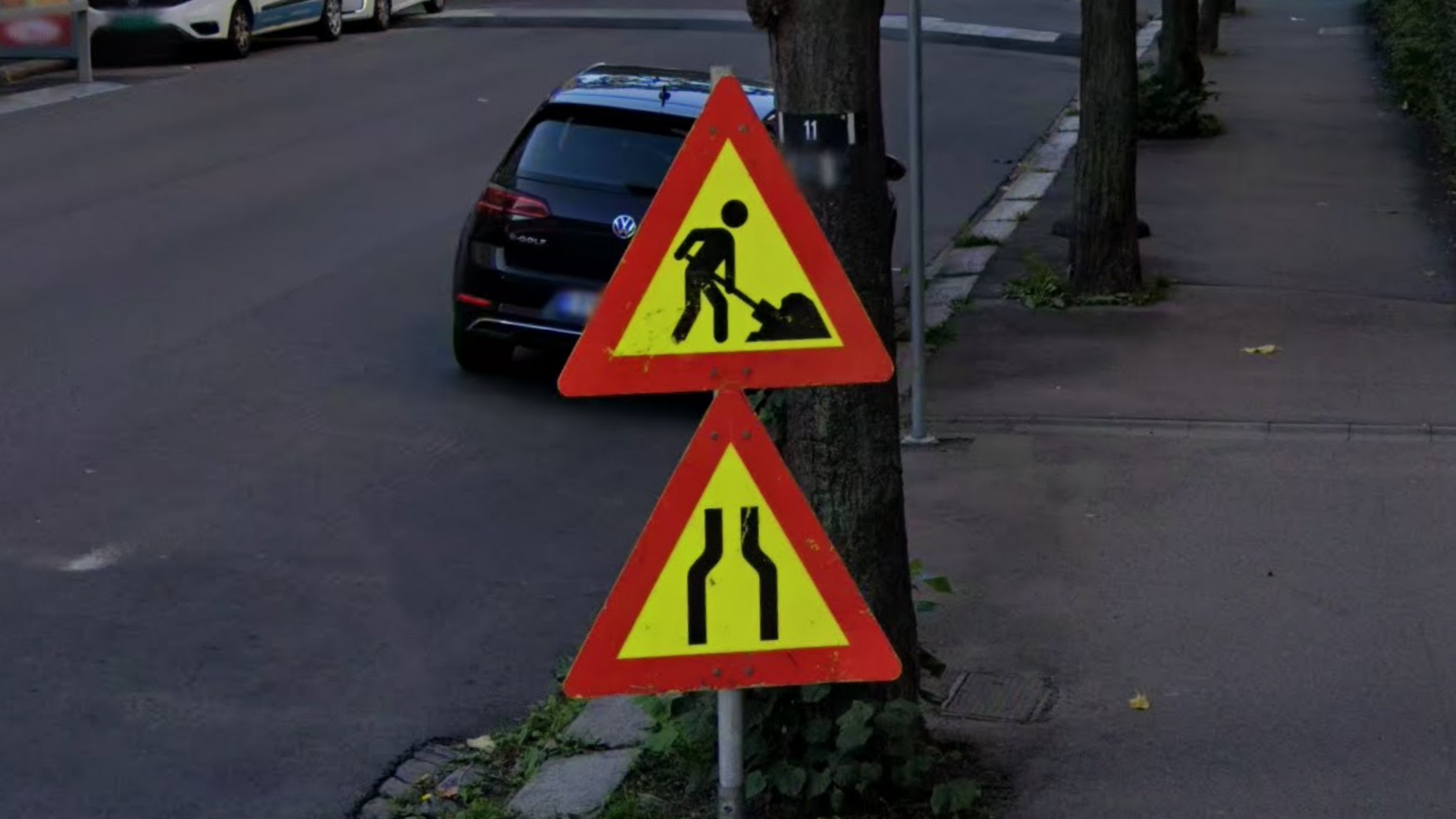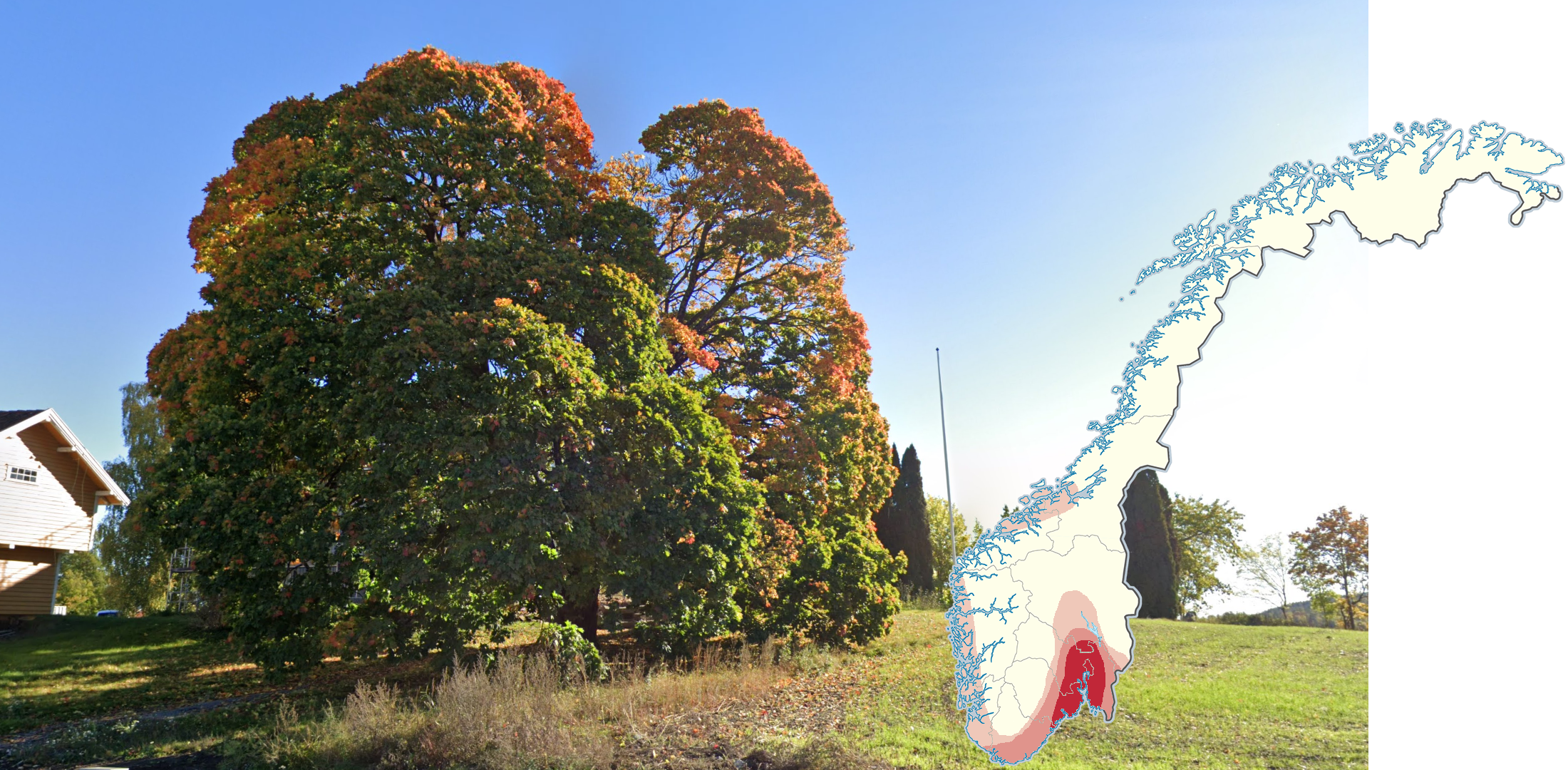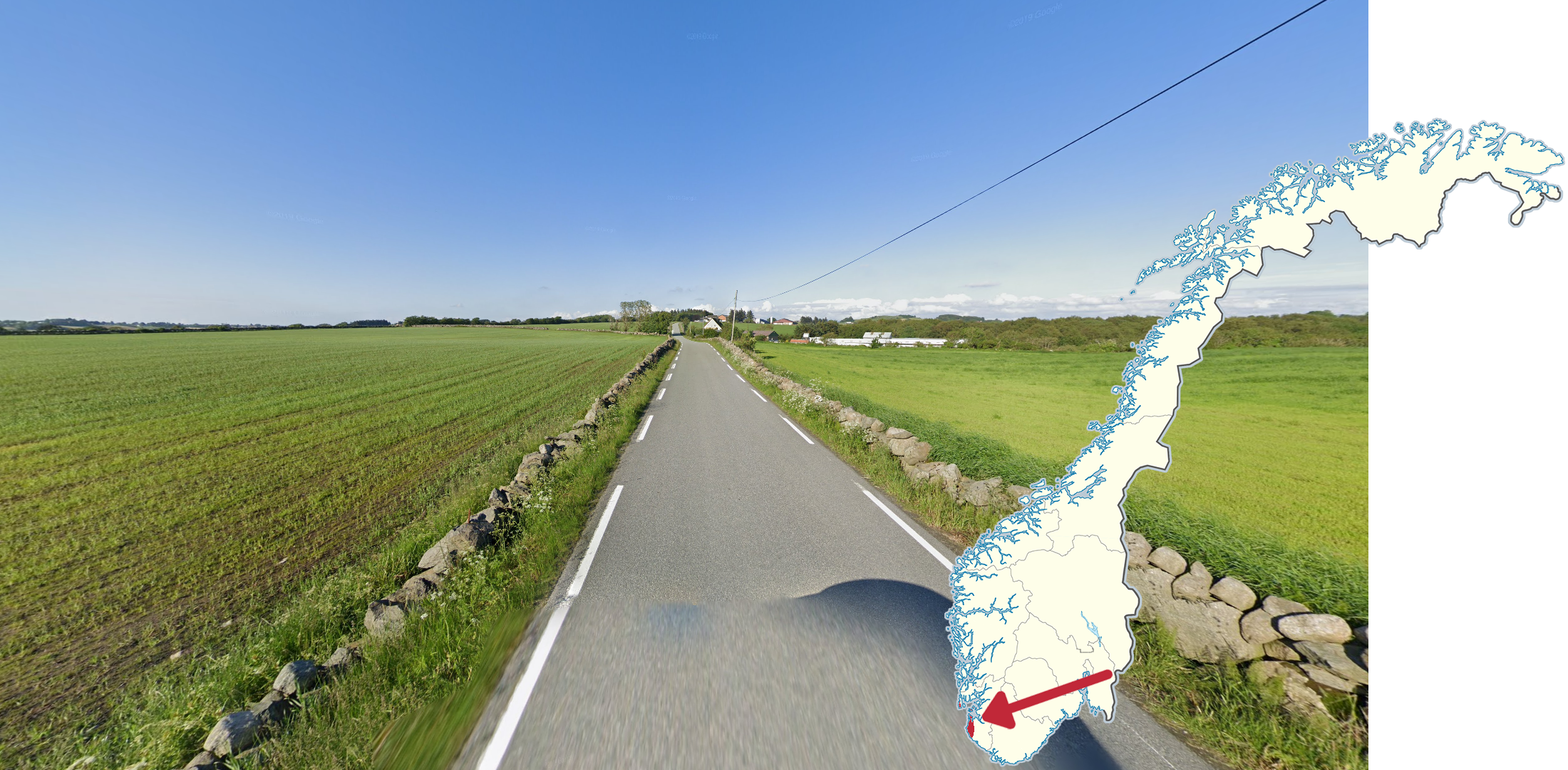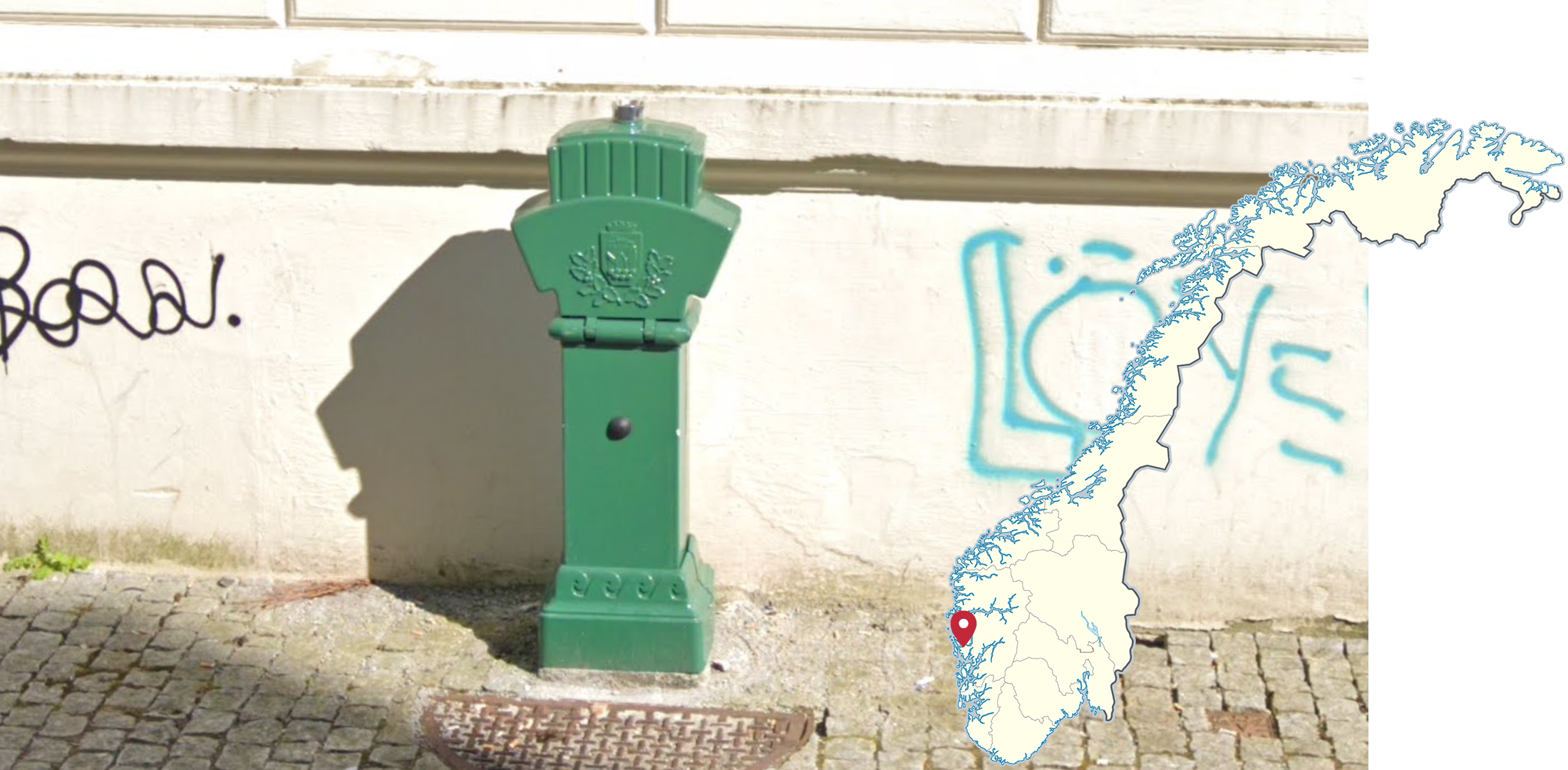
Norway
The vast majority of Norwegian houses are made of wood. Many houses are painted red, which is also typical for Sweden and Finland. Black painted houses are also quite common, more so than in Sweden or Finland.
NOTE: While the architecture is very similar to that of Sweden and Finland, there are some small, general differences. Sweden and Finland generally have more red and yellow houses, while Norway generally has more white houses. There is also a larger percentage of wooden houses in suburbs and near town centres in Norway than in Sweden and Finland, which use more brick than Norway.
Smaller Norwegian roads typically have long dashed white outer lines, while larger roads have solid outer lines and yellow middle lines. The yellow lines have a distinct tinge of orange.
NOTE: Sweden only has white road lines, and the dashes on outer lines are shorter than in Norway. Finnish outer road lines are always solid, and middle lines can be yellow or white.
The Norwegian language contains the special letters Æ, Ø and Å.
NOTE: The special letters found in Norwegian can also be found in some of the other Northern Germanic languages:
Danish uses Æ, Ø and Å.
Swedish uses Å, but not Æ or Ø. Norwegian also uses more E’s than Swedish, while Swedish uses more A’s instead. Norwegian uses “kk” where Swedish uses “ck”.
Icelandic uses Æ, but not Ø or Å.
Finnish uses Å, although it is viewed as a Swedish letter.
It is also fairly common to find thin wooden snow poles with painted reflectors.
NOTE: While wooden snow poles can be found in other Nordic countries, they will typically not have reflectors.
Norwegian pedestrian signs typically have four stripes and a very simply drawn person. Note however, that there is a version with five stripes and a version where the person is more detailed and wearing a hat.
NOTE: While Finnish pedestrian signs have five stripes, Swedish pedestrian signs have four stripes. However, the person on Swedish signs is detailed, but without a hat.
On smaller roads, it is common to see these blue signs with a large white M.
NOTE: Similar signs can be found in Sweden, however the font is distinctly different. The middle point of the M does not extend to the bottom of the letter. There are no similar signs in Finland.
Street signs will generally be centred on top of sign posts.
NOTE: Street signs in Sweden will normally be attached either to the side of sign posts or lamp posts.
Most smaller road signs will be attached with four visible sign bolts in the shape of a tall rectangle. Beware that you may occasionally find framed signs instead, particularly in urban settings.
Small white square signs, displaying the road number on top, and the distance to the closest town, are common to see along medium sized roads.
The road number will be preceded either by an R or an F. F roads show up as Fv on the map and are generally difficult to locate, while R roads lack any letters on the map and are generally more findable.
Lamps attached to wooden poles in Norway are normally mounted to the pole with a thick single bolting.
NOTE: Sweden and Finland use double bolting.
The first digit of Norwegian road numbers are region dependent. Note that there are some exceptions among single and two-digit roads.
There are also a small number of roads beginning with a 9: Road 9, going north of Kristiansand, and a couple of two-digit roads in the far north.
NOTE: Regional roads starting with “Fv” do not follow this pattern.
Bilingual signs with Sámi can be found in several northern areas in Norway. While the Sámi languages are very different from Norwegian, the best way to recognize them are the letters Á, Đ and the use of several vowels in a row, something which is uncommon in Norwegian.
Note that not all signs in these areas will be bilingual.
This species of fern (Pteridium aquilinum, also known as bracken) which typically has a fairly tall stem and many wide leafs branching out, is mostly found in the south of Norway. Beware that other species of ferns can be found further north.
Svalbard is an unincorporated archipelago within the Norwegian Kingdom.
A separate Plonk It guide to Svalbard can be found here.
Along the Russian border you can see this noticeably humid and green-looking road, with very overcast and occasionally foggy coverage. The trees are somewhat low and mainly consist of thin birches and pines.
GeoGuessr’s own official Norway map is not very good, for a variety of reasons. Plonk It recommends the following map instead:
AI Gen - Norway (map link) - 50k+ arbitrarily generated locations, balanced with streaking in mind. Not pinpointable.
In addition, here are some resources to help you practise Norway:
Plonk It Norway (map link) - This map contains locations for practising each meta in the Plonk It Norway guide from step 2 to 3.
